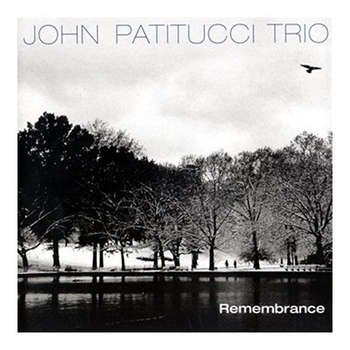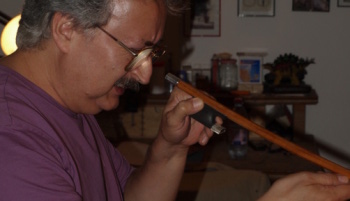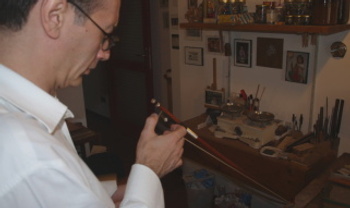TO LOOK AND TO SEE
Before speaking about the topic of this week "the torsion", Iwould like to introduce you the latest output of a friend /cutomers of ours. The new CD by John Patitucci with Joe Lovano - Sax and Brian Blade - Drums has recently been released. I had the plesasure to attend his concert and listen to some pieces.As soon as the new record is in my hand, I promise I will publish a thorough review.
If anybody wishes to know more, you can have access to some music samples by clicking on the picture inside the posted blog.


Knowing how “to look”, understanding what we see, is one of the main talents that a bow maker should own, like M° Navea Vera, that observes them, as I do.
It has happened very often to me to discuss with customers who, having problems with their bow, did not succeed to understand the reason of them. It was my task to explain them the reasons of what happened. Most musicians are accustomed to the sound they hear from their own bow without looking at it , therefore they do feel the effect of a malfunctioning, but they don’t know which one may be the cause. You may object: “Well, I see no problem, if it has a defect, I do not buy it”. If you have not yet bought it, so it is not at all a problem, but if it is already yours, it is quite another story.
Very often musicians, me included, when they try a bow or an instrument, are attracted by the pleasant feelings they can get out of it . You have dreamt and waited for that proper sound a lifelong , and that morning, with that bow or that instrument, you have it in your hands ; lively and vibrant.
You feel happy, cheerful and glad like a boy who has fallen in love for the very first time.
As you may know , when one is among the flames of love, he often has a poor objective perception . The feeling is so strong and he cannot manage to spot that defect, that you actually feel, but in that moment it does not affect your opinion, you are “sure the defect will be removed”, and you write the cheque.
I know by experience that many defects of the bow can be solved and often they can be definitely removed, but some others cannot. Therefore in this blog as well as in the next ones I will try to let you understand which are the essential things to look at in a bow and how to detect them.
Let’s begin with the direction.
Succeeding to understand the direction of a bow , or better, to understand if it is crooked , is a relatively simple thing, if you know how to look at it in the right way .
Even if this is one of the most solvable problem that a bow can show; I can say it is, indeed, a false problem. For example, in case of a badly made rehairing , that “ pulls on one side”, or better when the hair has more tension from one part in comparison to the other, it may happen that the bow , if played in these conditions, can become crooked after a certain time. Very often, when such cases occur, it is enough to make a new rehairing and the problem disappears.
If after the rehairing , the bow still turns out to be crooked, the bowmaker will have to carry out an adjustment by means of a heat-treatment.
The stick is heated until the wood becomes soft, after that, it is put in forced tension for some minutes. This operation, if carried out in a proper way, will not damage the wood fiber in any way and will allow the bow to regain a perfectly straight direction.
Let’s try to understand which is the correct way to look the direction of a bow.

There are two correct ways to look at a bow and understand if, and in a special way where, it is crooked.
The first one is represented in the photo at the beginning of the blog.
The stick must be placed the next possible to the eye, and taking the heel as reference, we will have to look straight to the head; in this way we manage to see even the smallest movements of the stick.
It is advisable to observe the stick also in the other way to be completely sure.
As you can see in the second photo, I have placed the head on the working table, I have moved the head away and I have slightly lowered down the heel.
This position increases the reference points that can be possibly seen .
Looking at the stick from above, in fact we look at the hair under, so putting these two elements into relation, we understand if the bow is more or less straight.
It will be enough to observe the hair at the side of the stick, if the hair portion is equally shared on both parts, from the heel to the head, it means that the bow is surely a straight one .
But, as already mentioned, the direction is not a main problem, from the next week we will begin to speak seriously about “torsion”.
I remind you that for every question, you can click on “Subscribe” and send me an email.
So long
Paolo
|